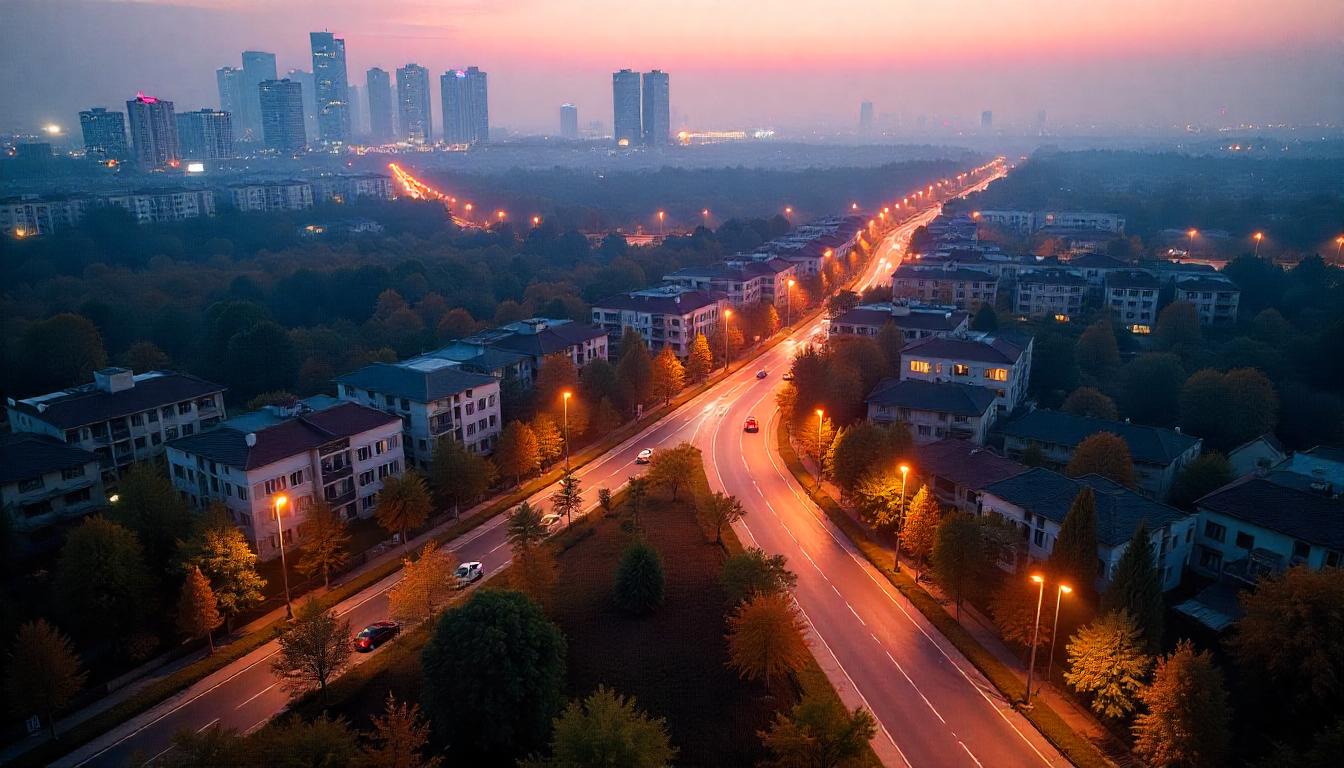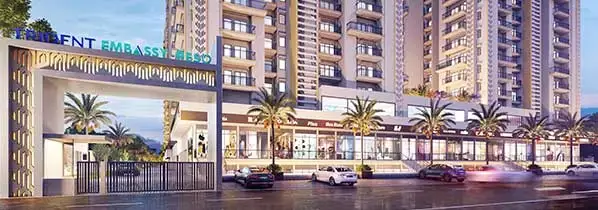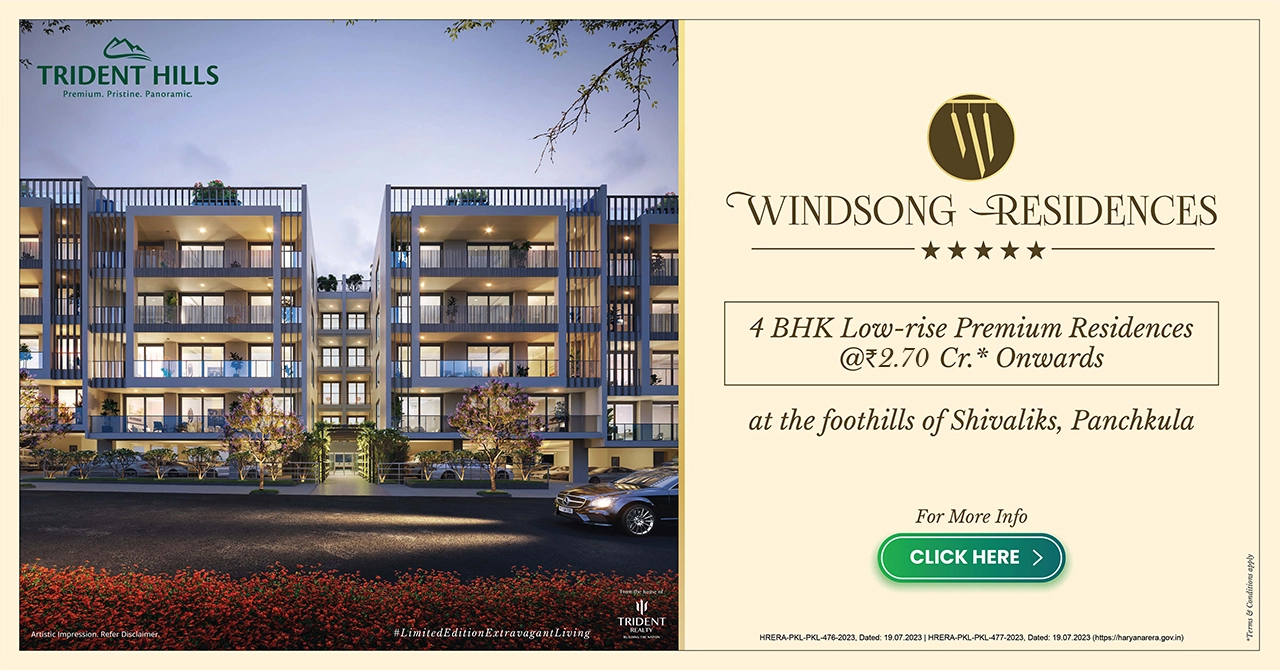
Luxury Is No Longer Just a Metro Phenomenon: How Lifestyle Expectations Are Shifting
The Indian real estate landscape is undergoing a quiet but profound transformation. Once associated with the skyscrapers of Mumbai, Delhi, or Bengaluru, luxury living is now thriving in emerging cities like Panchkula, Indore, and Coimbatore. High-net-worth individuals (HNIs), professionals, young families, and retirees are increasingly drawn to Tier 2 and Tier 3 cities, where improved infrastructure, accessible luxury, and a reimagined lifestyle are reshaping buyer priorities. This shift isn’t just a trend—it’s a response to evolving aspirations, where privacy, wellness, and community take precedence over mere opulence. In this article, we explore how luxury is being reimagined beyond metros and why integrated townships are at the forefront of this change.
The Evolving Definition of Luxury in India
Luxury in Indian real estate was once defined by prime locations in metro cities, extravagant interiors, and proximity to business hubs. Today, the focus has shifted toward holistic living experiences. A 2024 report by Knight Frank India reveals that luxury homebuyers now prioritize spaces that integrate privacy, wellness, sustainability, and smart technology, reflecting a societal move toward environments that enhance overall quality of life over mere prestige.
Privacy and Space: Unlike the cramped high-rises of metros, buyers in emerging cities value expansive layouts, low-density communities, and independent homes. For instance, townships like Trident Hills in Panchkula offer plots, independent floors, flats, penthouses, duplexes, villas, etc., with private green spaces, appealing to those seeking exclusivity without urban clutter.
Wellness-Centric Design: Modern luxury includes wellness amenities like yoga pavilions, jogging tracks, and green landscapes. A JLL India report highlights that 62% of luxury homebuyers in 2024 prioritize wellness-focused features over traditional markers like marble flooring or imported fixtures.
Sustainability: Eco-friendly living has become mainstream. Buyers now demand energy-efficient designs, solar integration, and water recycling systems, aligning with India’s broader commitment to sustainable urban development through initiatives like the Smart Cities Mission.
This redefinition of luxury is driving demand in non-metro regions, where developers can offer larger spaces and innovative designs at a fraction of metro costs.
The Rise of Tier 2 and Tier 3 Cities
The migration of luxury demand to Tier 2 and Tier 3 cities is backed by compelling data. A 2024 ANAROCK Property Consultants report notes that cities like Chandigarh, Jaipur, and Coimbatore accounted for 18% of luxury home sales in 2023, up from 10% in 2019. This shift is driven by several factors:
Affluent Buyer Demographics: HNIs and young professionals are relocating to smaller cities for better work-life balance. For example, Chandigarh’s proximity to Delhi, coupled with its planned urban layout, makes it a magnet for professionals seeking luxury without the chaos of NCR.
Investment Potential: Tier 2 cities are delivering stronger returns on investment. According to a 2024 wealth report, property appreciation in cities like Indore and Surat surpassed Mumbai and Bengaluru in 2023, achieving annual growth rates of 12-15% compared to 8-10% in metros.
Lifestyle Appeal: Smaller cities offer cleaner air, less congestion, and a slower pace of life, which resonate with buyers prioritizing health and family.
Panchkula, for instance, has emerged as a luxury hotspot in northern India. Its proximity to Chandigarh, coupled with projects like Trident Hills, which offer low-density living and world-class amenities, has attracted buyers from Delhi, Punjab, and even NRIs.
Infrastructure and Connectivity: The Game-Changers
Enhanced infrastructure is fueling this shift toward Tier 2 and Tier 3 cities. The Indian government’s investment in connectivity has transformed these regions into attractive luxury destinations. Data from the Ministry of Housing and Urban Affairs shows that Smart City initiatives and expressway developments have significantly improved liveability in cities like Bhopal, Lucknow, and Mohali.
Expressways and Highways: Major infrastructure projects, such as the Delhi-Chandigarh Expressway and the upcoming Peripheral Ring Road in Bengaluru, have shortened travel times, making cities like Panchkula and Mysuru viable alternatives to metro hubs.
Air Connectivity: New airports and expanded regional connectivity, such as the upgraded Chandigarh International Airport, have made Tier 2 cities more appealing to frequent travelers and NRIs.
Metro Extensions: Projects like the Chandigarh Tricity Metro, set to connect Panchkula and Mohali by 2027, are boosting property values and buyer confidence in these regions.
These developments have not only made smaller cities more accessible but also positioned them as hubs for premium real estate, capable of rivaling metro standards.
Integrated Townships: Redefining Community Living
Integrated townships are central to this luxury migration. Unlike standalone apartments, these developments provide self-contained ecosystems with residential, commercial, and recreational spaces. A 2024 JLL India study indicates that 25% of luxury homebuyers prefer township projects for their comprehensive amenities and community-oriented design.
Holistic Amenities: Townships like Trident Hills in Panchkula offer clubhouses with sports facilities, retail hubs, and green spaces, creating a resort-like premium living experience that caters to families seeking convenience and leisure within their community.
Low-Density Living: Unlike metro high-rises, townships prioritize open spaces and privacy.
Community and Security: Gated townships provide 24/7 security, smart surveillance, and a sense of belonging, which are critical for HNIs and families.
These projects are redefining luxury by offering metro-grade facilities in serene, less congested environments, making them ideal for buyers seeking both investment value and lifestyle upgrades.
Technology: The New Luxury Essential
Technology is reshaping luxury expectations, particularly among younger buyers. A 2024 Economic Times Realty report highlights that 70% of luxury homebuyers under 40 prioritize smart home features, such as:
Home Automation: Systems for lighting, climate control, and security, integrated via apps, are now standard in premium projects.
Digital Communities: Townships are adopting IoT solutions for community management, including smart waste disposal systems and app-based concierge services, enhancing resident convenience.
Energy Efficiency: Solar-powered common areas and AI-driven energy management systems align with sustainability goals.
Affordability Meets Aspirational Value
One of the biggest draws of Tier 2 and Tier 3 cities is their affordability compared to metros. According to ANAROCK, the average price of a luxury home (above ₹1.5 crore) in Panchkula is 30-40% lower than in Gurgaon or South Delhi, while offering comparable or superior amenities. For example:
A 3BHK luxury apartment in Mumbai’s Lower Parel might cost ₹4-6 crore, with limited space and high maintenance fees.
In contrast, a 4BHK villa in a Panchkula township like Trident Hills, with private green spaces and township amenities, is priced between ₹1.8-2.5 crore.
This cost-to-luxury ratio, combined with higher appreciation potential, makes emerging cities a compelling choice for investors and end-users alike.
Government Policies and Urban Planning
Government initiatives are further fueling this trend. The Smart Cities Mission, launched by the Ministry of Housing and Urban Affairs, has allocated significant funds to cities like Chandigarh, Indore, and Bhopal, enhancing their urban infrastructure. Additionally, policies like RERA (Real Estate Regulation and Development Act) have increased transparency, boosting buyer confidence in non-metro markets.
Tax incentives, such as deductions under Section 80EEA for affordable housing, and relaxed FDI norms for township projects, have also encouraged developers to invest in Tier 2 cities, ensuring a steady supply of premium projects.
The Future of Luxury Living
As connectivity strengthens, infrastructure matures, and lifestyle preferences evolve, Tier 2 and Tier 3 cities are emerging as the new hubs of luxury living. Integrated townships, with their emphasis on community, wellness, and technology, are driving this transformation, offering buyers an opportunity to live better, not just bigger.
For those eyeing the future, projects like Trident Hills in Panchkula exemplify this new paradigm combining the serenity of non-metro living with the sophistication of urban luxury. As India’s real estate market continues to evolve, one thing is clear: luxury is no longer confined to the metros. It’s wherever aspirational living meets thoughtful design.









